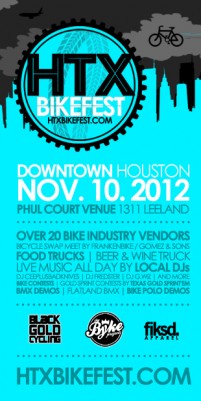The Big Uneasy
People who know Harry Shearer only as the bass player from This Is Spinal Tap (Derek Smalls) or through his voice work in The Simpsons (Mr. Burns among others) are about to be surprised. Shearer’s documentary, which he narrated, wrote and directed, The Big Uneasy tells the story of Hurricane Katrina in the way that only a native of New Orleans could.
New Orleans is a distinct town with an identity defined by its people, culture, sights, sounds and music. Few cities enjoy such an instant recognizable aura. As a resident of New Orleans, Shearer understands the city, its layout and its problems. Other Big Easy property owners include John Goodman, Brad Pitt and Jennifer Coolidge who either show up or lend narration to the film. “It’s a subject I felt deeply about,” Shearer told Free Press Houston by phone last week. “I met so many people whose lives were changed by Katrina. I had that inside me when I made the film.”
Shearer will be in Houston introducing the film and answering questions when The Big Uneasy opens this week for an exclusive engagement at the Alamo Drafthouse locations at West Oaks Mall and in Katy. Shearer appears at the Mason Road Alamo Drafthouse (Katy) on Friday, April 29, and the West Oaks Alamo Drafthouse on Saturday, April 30. The Q&A will be during the 7:30 pm. screening, with the film continuing throughout the week.
The Big Uneasy takes viewers on a chronological tour of Katrina as it floods New Orleans. Starting at 4:30 am. and the Industrial Canal breech the film proceeds in an hour-by-hour timeline, using computer simulations to depict the areas being flooded and cutting to scientists standing along the actual levee walls in each spot explaining how the various breeches took place. “There were over 50 breeches,” remarks Shearer. St. Bernard Parish, the 17th Street Canal, the Lower 9th Ward, City Park, Lake Pontchartrain, London Avenue; the way Shearer presents them, all of these places become vivid images etched in your mind, not just places on a map. Shearer admits one of the hardest things about the documentary was “getting accurate computer models” to accompany the story.
The Big Uneasy then proceeds to break down the components of the disaster and show how scientists studied the aftermath for water levels and soil erosion to determine how high the water reached. Two independent scientific teams with researchers from the University of Berkeley and Louisiana State University clash with the Army Corp of Engineers over their findings. Many of the breeches were caused by weak support in the structure of the walls not the water going over the top. One of the contractors hired by the Army Corp of Engineers took them to court over the methods that were used during the building of one section of the wall – and they lost. Thus insuring that the wall in that area was built below standards.
But the story doesn’t end in the present day. “These scientists were also digging up secrets from the past,” says Shearer. Starting in the 1950s the Army Corp of Engineers designed the Mississippi River Gulf Outlet project, or MR GO for short. “It’s a gash in the Earth forever,” notes Shearer. Since that time MR GO allowed salt water to infuse with the swamp and wetlands with the resultant erosion continuing on a year-to-year basis to this day. Referring to the Army Corp of Engineers, Shearer describes them as “an agency that lives in a world of no responsibility.”
Shearer uses The Big Uneasy to expose truths, untruths and the reality of rebuilding New Orleans. Shearer also appears playing a dentist in a low budget narrative film that was shot in New Orleans, Flood Streets, which traces the lives of different residents of the city as they reconstruct their lives after Katrina. Flood Streets, like the denizens of New Orleans, has its own beat, attitude and lifestyle. “New Orleans is not a city of Main and North streets,” Shearers proudly states. “The streets here are named after muses, Napoleonic battles, and themes in life,” Shearer points out. Several shots in The Big Uneasy show close-ups of street signs that illustrate his point, like Piety, Unity and Mystery.
- Michael Bergeron











